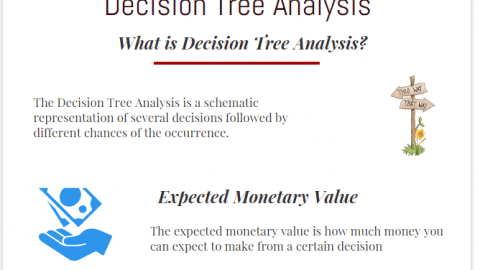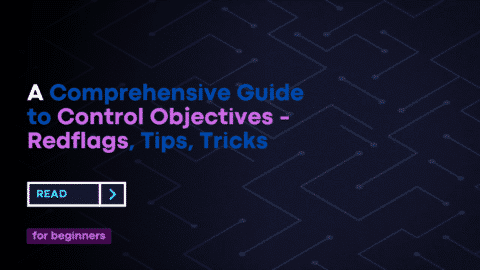Risk Management Check Sheets: How to Create Risk Management Check Sheet?
Master the art of Risk Management with our complete guide on Risk Management Check Sheets. Discover definitions, examples, types, and a step-by-step guide on how to prepare them effectively.
Table of Contents
Introduction
Risk Management Check Sheets: How to Create Risk Management Check Sheet? Risk management is not just a buzzword; it’s a mandatory practice for success in any business venture or project. Management Check Sheets are the unsung heroes in the realm of risk assessment and mitigation. This in-depth guide will provide you with a robust understanding of what they are, why they are essential, and how to effectively utilize them in various scenarios.
What Are Risk Management Check Sheets?
A Risk Management Check Sheet is a structured document specifically designed to systematically capture, categorize, and assess potential risks associated with a given project or business venture. It serves as a dashboard for monitoring risk severity, frequency, and likelihood. It’s the compass you need in the jungle of uncertainties.
Check Sheet is a structured way of identifying, assessing, and prioritizing risks that may affect a project, process, or other undertaking. A check sheet is a simple document that can be used for collecting data in a systematic manner. When applied to risk management, a check sheet helps in systematically identifying and assessing potential risks.
Steps to Create a Risk Management Check Sheet:
Step 1: Identify Objective & Scope
Determine the objective of the risk management exercise and the scope of the project or operation under review. This will guide what kinds of risks you’ll be looking for.
Step 2: Define Categories
Separate risks into relevant categories. Also, these could be financial risks, operational risks, strategic risks, etc.
Step 3: Set Up Risk Management Sheet
Create a table with multiple columns. The columns could include:
- Risk ID
- Risk Description
- Risk Category
- Likelihood of Occurrence
- Potential Impact
- Risk Score (Likelihood x Impact)
- Mitigation Strategies
- Responsible Person/Team
- Status
Step 4: Gather Information
Fill in each row of the check sheet with the risks you have identified. Also, use historical data, team inputs, and other resources to identify potential risks.
Step 5: Prioritize
Calculate the Risk Score for each risk to prioritize them. Also, a simple way is to multiply the likelihood score by the impact score.
Step 6: Add Mitigation Strategies
For each identified risk, add mitigation strategies that could either reduce the likelihood of the risk happening or lessen its impact.
Step 7: Assign Responsibility
Assign a responsible person or team for each mitigation strategy.
Step 8: Monitor and Update
Keep the check sheet updated with the status of each risk and whether the mitigation strategies are effective.
Example Risk Management Check Sheet:
Here is a simple example to illustrate:
| Risk ID | Risk Description | Category | Likelihood (1-5) | Impact (1-5) | Risk Score | Mitigation Strategy | Responsible Person | Status |
|---|---|---|---|---|---|---|---|---|
| 1 | Market Competition | Strategic | 4 | 5 | 20 | Develop unique features | Marketing Team | Ongoing |
| 2 | Budget Overrun | Financial | 2 | 4 | 8 | Tighter budget monitoring | Finance Dept | Ongoing |
| 3 | Supply Chain Delays | Operational | 3 | 3 | 9 | Identify alternate suppliers | Operations Team | Done |
| 4 | Employee Attrition | HR | 3 | 4 | 12 | Implement employee engagement plans | HR Dept | Ongoing |
Feel free to add more details or categories as necessary for your specific project or
Real-World Applications of Risk Management Check Sheets
Financial Investment Scenario
In the volatile world of financial investments, Risk Management Check Sheets can be the lifeboat you didn’t know you needed. Here, you’ll find line items categorizing types of risks like market volatility, economic downturns, and regulatory changes. Investors can use these sheets to stay ahead of the curve, making proactive choices instead of reactive mistakes.
Construction Industry
The construction industry heavily relies on Risk Management Check Sheets to avoid common and unique pitfalls. Also, topics like weather-related delays, material shortages, and safety hazards are included in these indispensable sheets. They are integral to the project manager’s toolkit, guiding them towards achieving both time and resource efficiency while ensuring worker safety.
Types of Risk Management Check Sheets
How do I make a checklist in Excel?
Qualitative Check Sheets
Qualitative Risk Management Check Sheets employ subjective metrics like expert opinions and historical data to categorize and prioritize risks. Also, this approach is particularly effective when empirical data is either unreliable or unavailable.
Quantitative Check Sheets
Quantitative Risk Management Check Sheets, on the other hand, are the mathematicians in the room. Also, they use numerical data to gauge the likelihood and impact of each risk. This provides a more data-driven perspective for making important decisions.
A Step-By-Step Guide to Preparing an Effective Risk Management Check Sheet
Identify Risks
The initial step involves a meticulous identification of potential risks. This involves brainstorming sessions, consultations with subject matter experts, and the study of historical precedents.
Categorize Risks
Once identified, the next step is to categorize these risks under relevant domains or classes for easier analysis and mitigation planning.
Define Metrics
This involves assigning metrics like severity and likelihood to each categorized risk. Also, you may opt for qualitative descriptors or quantitative numerical scores based on your check sheet type.
Prioritize and Allocate
Prioritize the risks based on the defined metrics and then allocate resources, such as personnel, time, and budget, for effective mitigation strategies.
Regular Monitoring
Risk is dynamic, not static. Thus, continual monitoring and updating of the Risk Management Check Sheet are critical for its success.
Regular Review
Set a timeline for regular review of the Risk Management Check Sheet. This ensures that the risks are continuously monitored and that the mitigation strategies are adjusted as necessary.
Risk Reporting
Develop a mechanism for reporting risks to all stakeholders, including team members and senior management. Also, this can be done through periodic reports, dashboards, or meetings.
Feedback Loop
After implementing the mitigation strategies, gather feedback to understand their effectiveness. If some strategies are not working as planned, make the necessary adjustments.
Documentation
Maintain detailed records of each risk and the steps taken for mitigation. Also, this documentation can serve as a valuable resource for future projects.
Close Out
As risks are mitigated or projects come to a close, update the “Status” column to reflect whether the risk has been successfully mitigated, is no longer relevant, or requires ongoing monitoring.
Post-project Analysis
After the project or operation is completed, review the Risk Management Check Sheet to evaluate the effectiveness of the risk management process. Also, identify lessons learned and best practices to carry forward to future projects.
Continual Improvement
The goal is to make the risk management process more effective over time. Also, use the learnings from each project to refine the Check Sheet for future use.
Additional Considerations:
- Scalability: The Check Sheet should be flexible enough to be scaled up or down depending on the size and complexity of the project.
- Technology: Consider using project management or risk management software that can make the process more efficient, especially for larger projects.
- Legal & Regulatory Compliance: Ensure that your risk management process complies with relevant laws and industry regulations.
- Stakeholder Involvement: Involve key stakeholders in the risk management process to ensure that all perspectives are considered.
FAQs
What is a Risk Management Checklist?
A risk management checklist is a tool used by businesses, organizations, or individuals to identify, assess, and prioritize various risks involved in a project, operation, or decision-making process. Also, it serves as a guide to ensure that all potential risks are considered and appropriate measures are put in place to mitigate or eliminate them. Typically, the checklist will include categories like:
- Financial Risks
- Operational Risks
- Compliance Risks
- Strategic Risks
- Human Resource Risks
- Environmental Risks
- Technology Risks
- Market Risks
Within each category, specific risks will be identified along with actions to mitigate them.
What is a Risk Assessment Sheet?
A risk assessment sheet is a document used to outline the potential risks involved in a specific activity, project, or process. Also, it usually contains details such as:
- Description of the risk
- Likelihood of occurrence
- Impact if the risk occurs
- Risk level (often calculated as likelihood x impact)
- Mitigation strategies
- Responsible parties for implementing mitigation
Best Practices For Office Relocation Project
How to Create a Risk Checklist?
Creating a risk checklist requires a methodical approach, often starting with a broad brainstorming session and then drilling down into the details. Here’s a step-by-step guide:
- Brainstorm Potential Risks: Gather team members and stakeholders to brainstorm all potential risks across different categories.
- Categorize Risks: Once you have a list, categorize the risks into types such as financial, operational, compliance, etc.
- Prioritize Risks: Not all risks are equal. Use a simple scoring system to rank them based on their likelihood and potential impact.
- Identify Mitigation Strategies: For each risk, identify possible mitigation strategies that can either reduce the likelihood of the risk occurring or minimize its impact.
- Assign Responsibility: Designate a person or a team who will be responsible for each mitigation action.
- Review: Once the checklist is created, make it a point to review it at regular intervals, updating it as necessary.
How to Write a Risk Assessment Checklist?
A risk assessment checklist is essentially a more focused form of a risk management checklist. To write one:
- Identify the Scope: Determine the activity, project, or process that you are assessing.
- List Potential Risks: Write down all the potential risks involved, however minor they may seem.
- Assess Likelihood and Impact: Use a scale (e.g., 1-5 or 1-10) to assess the likelihood and impact of each risk. Multiply these numbers to get a risk level score.
- Mitigation Strategies: For each risk, write down what steps can be taken to mitigate it.
- Assign Responsibility: Identify who is responsible for implementing each mitigation step.
- Documentation: Finally, put all of this information into a document that is easily accessible and understandable to all stakeholders involved.
By following these steps, you’ll create a robust risk assessment checklist that can help protect against the unforeseen challenges that can arise in any endeavor.
Conclusion
Risk Management Check Sheets are an indispensable component in the toolkit of modern businesses and project managers. Also, understanding their types, applications, and preparation methods can empower you to navigate the complex landscape of uncertainties more confidently. With this guide, you’re not just managing risks; you’re mastering them.
Excel Vs Google Sheets: Choosing the Right Spreadsheet Software
Hello, I’m Cansu, a professional dedicated to creating Excel tutorials, specifically catering to the needs of B2B professionals. With a passion for data analysis and a deep understanding of Microsoft Excel, I have built a reputation for providing comprehensive and user-friendly tutorials that empower businesses to harness the full potential of this powerful software.
I have always been fascinated by the intricate world of numbers and the ability of Excel to transform raw data into meaningful insights. Throughout my career, I have honed my data manipulation, visualization, and automation skills, enabling me to streamline complex processes and drive efficiency in various industries.
As a B2B specialist, I recognize the unique challenges that professionals face when managing and analyzing large volumes of data. With this understanding, I create tutorials tailored to businesses’ specific needs, offering practical solutions to enhance productivity, improve decision-making, and optimize workflows.
My tutorials cover various topics, including advanced formulas and functions, data modeling, pivot tables, macros, and data visualization techniques. I strive to explain complex concepts in a clear and accessible manner, ensuring that even those with limited Excel experience can grasp the concepts and apply them effectively in their work.
In addition to my tutorial work, I actively engage with the Excel community through workshops, webinars, and online forums. I believe in the power of knowledge sharing and collaborative learning, and I am committed to helping professionals unlock their full potential by mastering Excel.
With a strong track record of success and a growing community of satisfied learners, I continue to expand my repertoire of Excel tutorials, keeping up with the latest advancements and features in the software. I aim to empower businesses with the skills and tools they need to thrive in today’s data-driven world.
Suppose you are a B2B professional looking to enhance your Excel skills or a business seeking to improve data management practices. In that case, I invite you to join me on this journey of exploration and mastery. Let’s unlock the true potential of Excel together!
https://www.linkedin.com/in/cansuaydinim/










